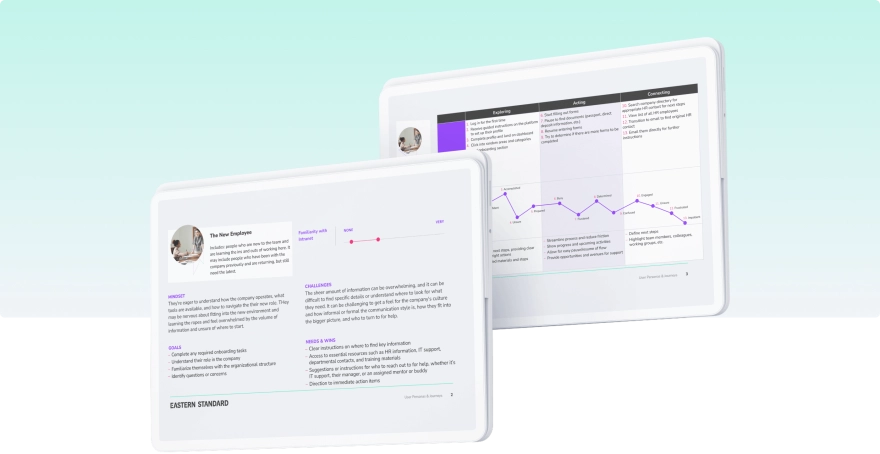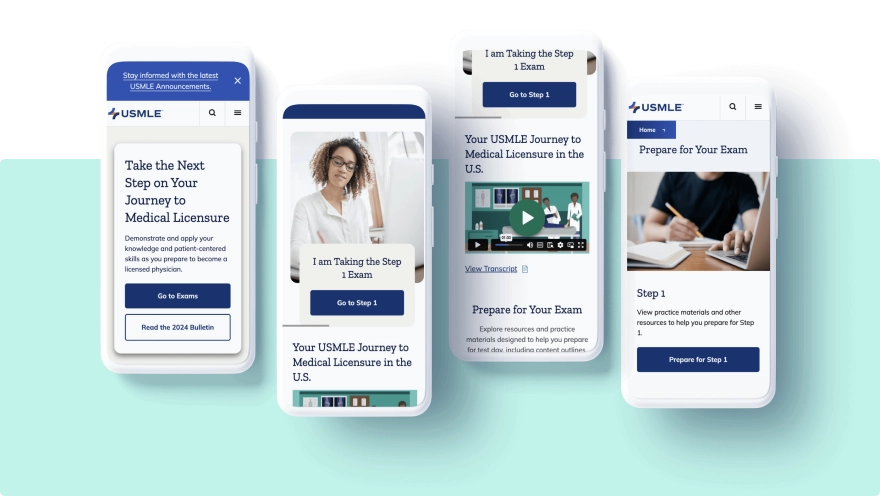Improving Digital Experiences Through Inclusive Research and Design
Inclusivity leads to better digital user experiences … full stop. When you approach website UX research and design guided by the thoughts, feelings, needs, and abilities of a wide swath of users, you can’t help but improve usability and satisfaction across the board.
Inclusive vs. Accessible: What’s the Difference?
Accessible experiences are designed thoughtfully and intentionally to be used by everyone, regardless of their visual, auditory, motor, cognitive, learning, neurological, and/or physical abilities. Website accessibility is not an afterthought or an optional part of building a website or digital product — it is required by law as part of the Americans with Disabilities Act (ADA) — and you will put yourself at legal risk if you don’t comply.
Inclusive experiences incorporate the same tenets as accessible experiences, but they push them much further, taking into account the broad range of backgrounds and lived experiences that users bring to the engagement table. They reflect an understanding of differences in:
- Industry
- Job role
- Ethnicity
- Age
- Gender identity
- Sexuality
- Educational background
- Geographic location
- Language
- Socioeconomic status
- Levels of tech literacy
- And more
Why Inclusivity Matters to Your Users
Put simply, prioritizing inclusivity shows that you’re committed to doing the right thing by your users. It conveys that you understand (and celebrate!) the fact that not every person using your product or service is the same — and that you want to use all of the tools at your disposal to create a satisfying and enjoyable experience for them.
Why Inclusivity Should Matter to You
An inclusive approach to UX research and design provides the following important business benefits:
- Broader Audience Reach: By considering a diverse range of users, you can attract and retain wider and more loyal audiences.
- Market Advantage: By meeting the needs of historically underserved or marginalized groups, you can gain an edge over peers and competitors who are overlooking their needs.
- Innovation: Inclusive UX research often leads to more creative, effective, and efficient solutions that benefit all users.
- Improved Search Engine Optimization: Inclusive website features like proper heading structure, alt text for images, and clear navigation result in better search rankings.
Our 5-Step Approach to Inclusive UX Research and Design
Every digital agency has its own approach and level of commitment when it comes to incorporating inclusivity into projects and processes. Here’s a look at ours.
Step 1: Assemble Inclusive Project Teams From the Outset
We believe that if the entire team — on both our agency side and the client side — isn’t dedicated to prioritizing inclusivity and isn’t, in itself, diverse enough to evaluate things through this lens, the effort won’t succeed. This requires:
- Trust — We create an environment where team members are encouraged and comfortable enough to speak up if something isn’t right — and not be afraid to be wrong.
- Intent — When reviewing important project artifacts, we specifically seek out inclusivity gaps and opportunities to bring in extra eyes — either internally or on the client side — to ensure we aren’t in an echo chamber of similar experiences, backgrounds, and job roles.
- Accountability — While everyone has a stake in this work, we establish a single point person who makes the final calls on what works and what doesn’t.
Step 2: Create a Customized Research Plan
When approaching any new project, we recognize that our team can only bring the perspectives that our backgrounds and lived experiences have afforded us. That’s why we start with inclusive research — so accessible experiences are conceived and woven into a project’s foundation and fabric right from the start.
“When we think about inclusion and accessibility from a design perspective, it’s often too late in the piece.”
— MANISHA AMIN, CEO OF AUSTRALIA’S CENTRE FOR INCLUSIVE DESIGN
We leverage this research process to expand or redefine what we know — or what we think we know — by providing space for conversation, insight, and inclusion across historically underrepresented groups.
This involves:
Inclusive recruiting recommendations for research participants, requiring an initial focused discovery effort to identify and define historically excluded groups for our clients and their peers and competitors.
Scoping for a variety of research methods and phases, including:
- Current-state usability testing & audience research to identify experience gaps
- Development of user personas that represent the full range of users, needs, and abilities in the client’s target audiences
- Future-state usability testing at different phases of design, development, and post-delivery

Step 3: Execute With Inclusivity Top of Mind
Ensuring the execution of research encompasses best practices, with an emphasis on:
Making methods and execution accessible for all participants with a focus on same-language communication, device/platform accommodation, types of testing, scheduling flexibility, etc.
Good research hygiene, which includes:
- Providing transparent and detailed descriptions of methodologies
- Having clients and colleagues review research plans to improve quality and identify oversights or faulty assumptions
- Ensuring that participants are fully informed about the research and have consented to participate
- Avoiding bias and influence
- Ensuring consistency and tone of questions
- Protecting the privacy of participants and handling data with care to avoid unauthorized access
- Keeping comprehensive notes on all research activities and methodologies, and how they were used to shape decisions

Step 4: Synthesize, Report & Integrate Results
What we do with the information we gather matters. At this stage, we focus on:
- Tying feedback and insights back to audience types to check for participation rates, experience gaps, and overlooked needs
- Deliberate discussions about the priority of historically excluded audience/persona needs and deficiencies
- Reporting results promptly, faithfully, and completely to the client with data that is organized systematically, making it easy to retrieve and understand
- Designing deliverables around inclusivity (e.g., persona information, website content and labels, form fields, and help text)
- Deliberately removing experience barriers (e.g., requirements for form submissions, inaccessible content formats, and unnecessary contact requests)

Step 5: Design & Build With Intention
As we move into content strategy, visual/UX design, and site build phases, we ensure that copy, graphics, and code all meet the standards we set for accessibility and inclusivity at the project outset. But the commitment to inclusivity doesn’t end at launch. Before final handoff, we train our client teams on requirements and best practices for accessibility and inclusivity to ensure that future changes to content, page layouts, or ADA guidelines don’t introduce any concerns as the project moves into the future.
About Sara Kaplow – Senior UX/Content Strategist
Sara is a deeply experienced content strategist with a background in non-profit digital strategy, local journalism, and software as a service (SaaS) – equally skilled at building in-house and client-facing content practices and delivering results in content design, content modeling, UX writing, editing, and content operations. She holds a BA in English from Kenyon College.


